Brief History
When it comes to food in Italy, you cannot miss the mention of pasta. Pasta has been in existence since time immemorial. Today, it is considered a staple of international cuisine. It is believed that the Venetian merchant Marco Polo brought pasta from his journeys to China.
Some people learned that pasta was a rediscovery of a product (noodles) that was once common in ancient Italy among the Romans and the Etruscans. There is evidence of an Etrusco-Roman noodle that was made from the same product that made pasta. It was called “lagane,” which is the source of the word “lasagna.”
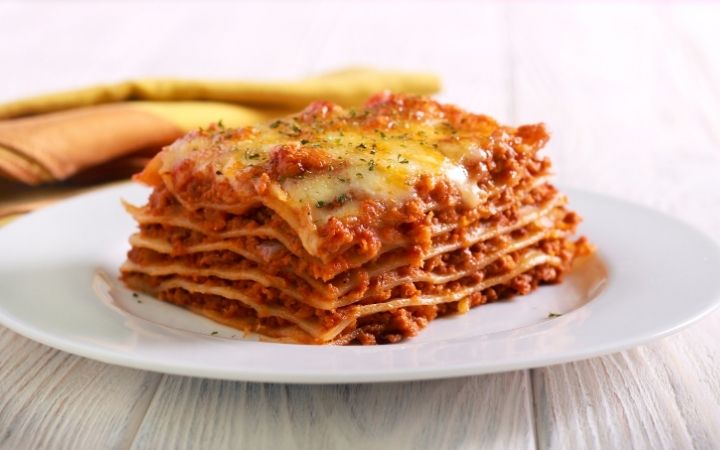
An Introduction to Dried Pasta
There are different pasta varieties; dried pasta is known as pasta Secca, and fresh pasta is known as pasta Fresca. Dried pasta comes in different shapes. They range from simple tubes to bow ties, which are known as “butterflies.” There are also unique shapes like rackets (racchette). You will always find these types of shapes where pasta is made.
According to Italian law, dried pasta needs to be made with water and 100% durum semolina flour. What makes dried pasta from Italy better compared to other places are the extrusion and drying methods.
There are more complex shapes of dried pasta, such as the radiatore, designed for clutching and holding onto sauces. Dried tube pasta has ridges that hold onto the pasta sauce too. The ridges are created during the extrusion process. During extrusion, the pasta is forged from a copper mold and cut to the desired length before it is left to dry.
The pasta is then dried at a specific temperature and time. Pasta that is produced in bulk dries at a shorter period hence compromising the quality. The best quality pasta is supposed to dry at lower temperatures and take a long time, like 50 hours. The result is usually superior noodles that can hold any Italian pasta sauce.
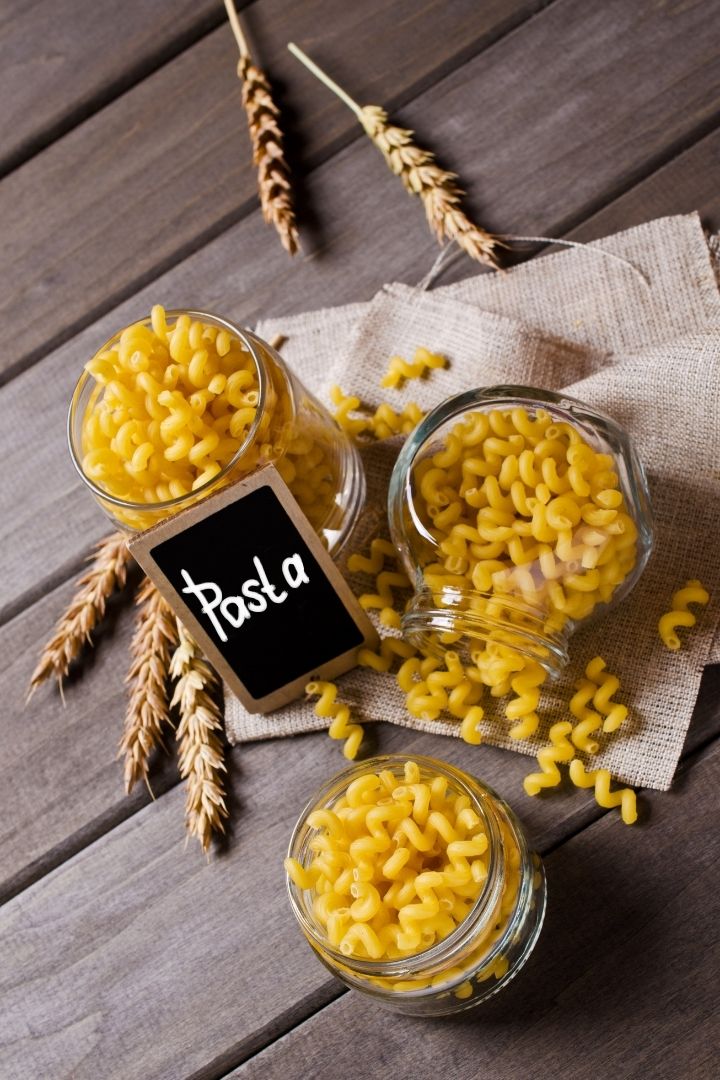
A History lesson on fresh pasta
Pasta starts as fresh pasta since some are meant to be eaten “soft.” Fresh pasta can be made with different ingredients compared to the dried pasta. For instance, people in the Northern areas of Italy use eggs and all-purpose flour to make fresh pasta. Those in Southern regions use water and semolina. When pasta is served in a household, it is meant to show culinary prowess. However, fresh pasta is not necessarily better than dried pasta.
Some varieties of pasta are served only dry or fresh. It is in this case that you can argue whether fresh pasta is better than the dried variety. The region of Emilia-Romagna is known to be making the best fresh pasta. The people here serve it with cream sauces. They use tomato sauces during the summer months. The Piedmontese serve their fresh pasta with butter sauce covered with slices of decadent local black truffles. When served with fresh pasta in Italy, be sure that it was made that day and fresh!
Cooking pasta will determine whether it will be fresh or dry. It needs to be pasta al dente: this means it is tender but firm to the teeth. Fresh pasta takes a little time to be cooked. If you want to have perfectly fresh pasta, use a big cooking pot and plenty of water. This will prevent the pasta from sticking, and also, the pasta will be well cooked. Don’t forget to add enough salt as well. To avoid killing the flavor in the pasta, don’t wash the pasta after cooking.
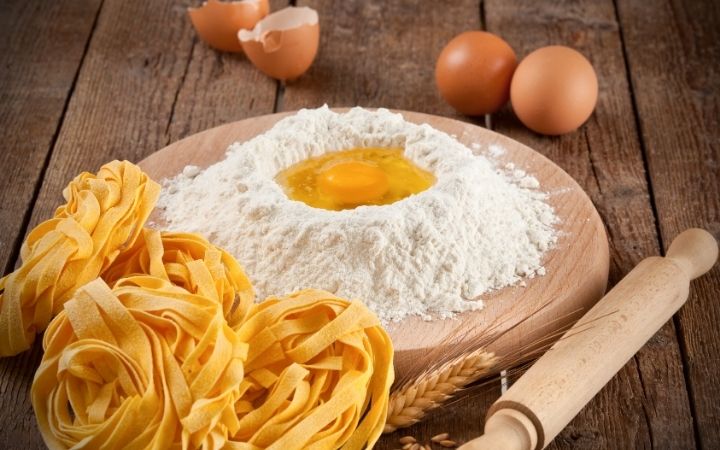
But who brought pasta to Italy?
Although there is a popular legend that claims Marco Polo introduced pasta to Italy from China, pasta can be traced back to the 4th century B.C. An Etruscan tomb showed a group of natives making what looked like pasta. Greek mythology suggests that the Greek god Vulcan invented a tool that made strings of dough known as spaghetti.
Classic and Authentic Pasta Recipes to try at home
Here are some authentic Italian recipes that you can try at home:
Lasagna Bolognese
Proportions: serves 12
Ingredients for the Bolognese:
- 1 large chopped onion
- 1 large carrot, peeled and chopped
- 2 stalks celery, chopped
- 3 cloves garlic, minced
- ½ cup dry white wine
- 2 (28 ounces) cans crushed tomatoes
- ¼ cup tomato paste
- 1 cup low-sodium beef (or chicken) broth
- 1 bay leaf
- 1 cup whole milk
- Kosher salt
- Freshly ground black pepper
Ingredients for the Lasagna:
- 1 pound lasagna noodles
- 3 cups ricotta
- 1 large egg, beaten
- 1 cup grated parmesan
- 1 ½ teaspoon dried oregano
- ¼ teaspoon crushed red pepper flakes
- Kosher salt
- Ground black pepper
- 1 pound fresh sliced mozzarella
- Freshly chopped parsley for serving
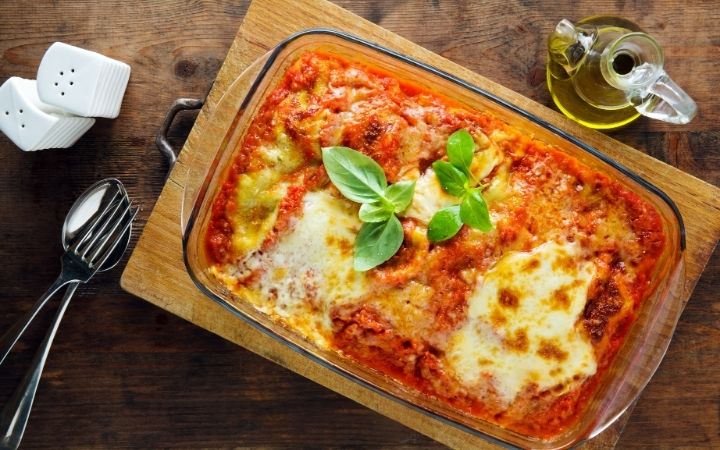
Procedure:
- Heat oil in a large Dutch oven over medium-high heat. Add carrot, celery, and onions and cook for 5 minutes until soft. Add garlic, then stir in beef. Cook for about 8 minutes until it’s no longer pink.
- Add wine and simmer the mixture. Cook until the wine is reduced. Stir in tomatoes, tomato paste, stock, and bay leaf. Allow the flavors to meld for 1 hour.
- Remove the bay leaf and stir in milk. Let it simmer for 45 minutes, then season with pepper and salt.
- Gather lasagna: Preheat the oven to 190.5 degrees Celcius. Cook pasta according to the instructions in a large pot of boiling salted water.
- Combine ricotta, egg, oregano, ¾ cup Parmesan, and red pepper flakes in a medium bowl. Season with pepper and salt.
- Add a thin layer of Bolognese to a baking dish. Add a layer of noodles and then top with ricotta mixture and sauce, repeat the layers. On the last layer of noodles, add bolognese, the remaining ¼ cup of parmesan, and mozzarella.
- Cover it with foil and bake for 40 minutes. Remove the foil and bake again for 20 minutes or until the sauce is bubbling.
- Garnish with parsley before serving.
Lemon Ricotta Pasta
Proportions: serves 4
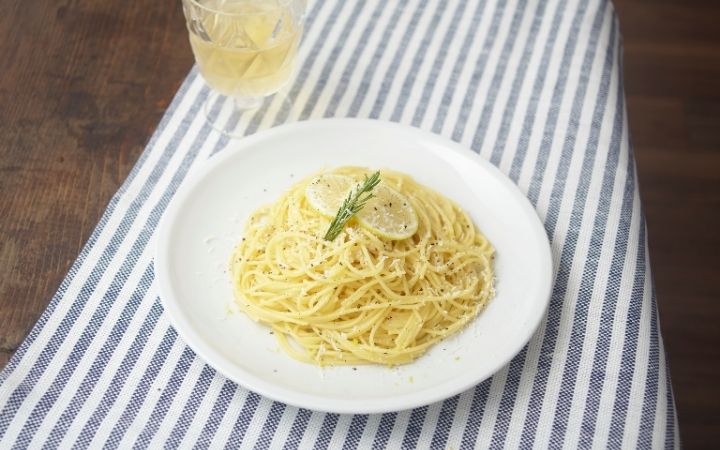
Ingredients:
- 1 pound, bucatini or spaghetti
- 1 cup ricotta
- ½ cup extra-virgin olive oil
- ½ cup freshly grated parmesan or pecorino
- Juice or zest from 1 lemon
- Kosher salt
- Freshly ground black pepper
- A pinch of crushed red pepper flakes
- Freshly sliced basil, for serving
Procedure:
- Cook pasta in a large pot of salted water. Keep 1 cup of pasta water, then drain.
- In a medium bowl, combine ricotta, pecorino, oil, lemon juice, and zest—season with salt, a pinch of red pepper flakes, and pepper. Add ricotta mixture and ¼ cup reserved pasta water in case the sauce is too thick.
- Serve with basil, more pecorino, and a drizzle of oil.
Spaghetti Lasagna
Portion: Serves 12
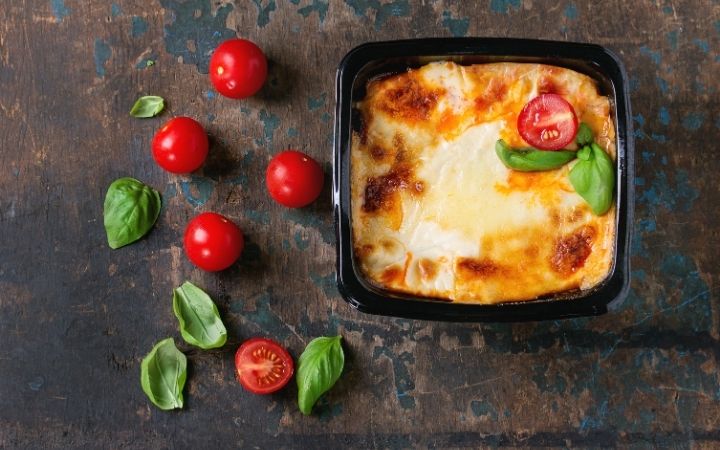
Ingredients:
- 1 pound spaghetti
- 2 eggs, lightly whisked (divided)
- ½ cup finely grated Parmesan
- 2 tablespoons extra-virgin olive oil
- 1 onion, chopped
- 3 garlic cloves, minced
- 1 pound, ground beef
- 2 tablespoons tomato paste
- 1 28 ounces can, crushed tomatoes
- ¼ tablespoonful, dried oregano
- 3 cups ricotta
- 3 cups shredded mozzarella
- 2 tablespoons chopped Italian parsley
Procedure
- Add spaghetti in a large pot of salted boiling water and cook till al dente for 8 minutes. Drain water, then add 1 egg and the parmesan and toss to combine.
- Make sauce—heat olive oil in a large pot over medium heat. Add onion and cook for 5 minutes until tender. Stir in garlic and cook until fragrant for 30 seconds. Add the ground beef and cook for 6 minutes. Drain fat, then add tomato paste. Cook for 1 minute, then add oregano and tomatoes. Season with salt and pepper and simmer for 10 minutes. Preheat the oven to 350 degrees.
- In a medium bowl, combine the remaining egg and ricotta.
- Put a layer of the sauce at the bottom of a baking dish. Top with half of the spaghetti noodles. Cover with about half of the remaining sauce, half of the mozzarella, and half of the remaining sauce. Bake for 20-30 minutes until the cheese has melted and the lasagna is warmed. Garnish with parsley.
Summary
If you want to enjoy delicious meals, you can try Italian pasta! There are many varieties that you can try. Start with some of the above recipes.

Community of passionate writers and content creators who share a love for Italian heritage, culture, travel, food, and the Italian-American community. Our mission is to celebrate Italy’s rich history and traditions and connect with others who share the same passion.

